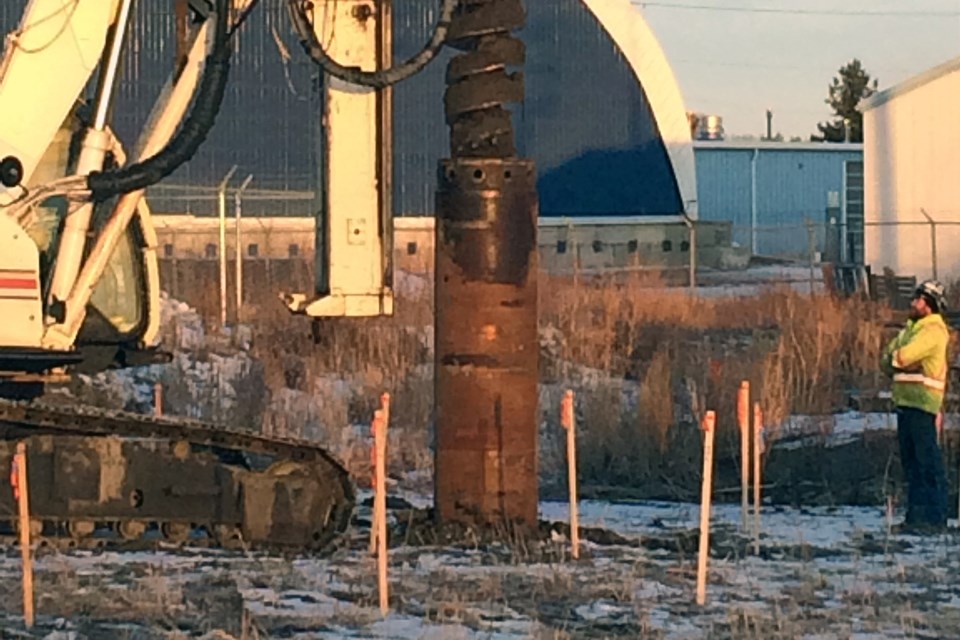INNISFAIL – The town is set to spend more than a quarter million dollars to remove dozens of old chemically contaminated wood pilings from the decommissioned waste transfer site.
The old wood pilings, which were treated with creosote and used to support the waste transfer station, were discovered at the half-acre site by work crews during the first stages of remediation for the entire 56.6-acre sewage lagoon and waste treatment site in the southwest corner of town.
In a report presented at council’s regular meeting on Nov. 12, Steven Kennedy, the town’s director of operational services, said 49 pilings were discovered during the grading of the waste transfer station site. Council was told that through documentation it’s possible there could be up to 60 pilings.
Kennedy said an attempt to remove the pilings immediately following their discovery was unsuccessful. The pilings were then left in place while a risk management plan was completed and a monitoring plan program developed with the approval of Alberta Environment.
“There are monitoring wells around the site to ensure contaminants are not leaching out,” said Kennedy, adding workers drilled beside each piling to determine how far away the contaminant is located from the piling. He said it was discovered the contaminant only leached out six to eight inches from each piling.
However, he said any further risk has now been contained.
“There is high confidence they are not leaching out,” said Kennedy.
With the town now starting to develop the entire 56.6-acre site, council approved a motion on Nov. 12 to adopt Kennedy’s plan to remove the pilings and all associated contaminated soil. Kennedy said it was important to proceed with the plan because it makes good sense to have the half-acre area totally cleaned up as the town is hoping to create a profitable industrial park that will be attractive for future investors.
“In order to sell that property it becomes pretty unsellable because you have this contaminant there,” said Kennedy. “Either we work around a condition of having an area somewhat leasable we would just be able to lease it and we would always have to maintain ownership of it, or we clean the site and make it so it is completely sellable, and that was the direction; to make it a clean site and then can be sold off at full market value.”
The plan includes a one-day trial run that was carried out last week at a cost of $25,000. If that proved successful a cost of $245,000 was approved by council to remove all pilings.
The work, which has been contracted out to Red Deer Piling, includes placing a protective casing in the ground around a wood piling, which will then be augered. The wood shavings from the augering will then be collected with the contaminated soil. Kennedy said it is hoped five pilings a day can be completed with the total project taking about two weeks to finish. The contaminants will then be hauled to a waste disposal site near Big Valley.
“We have a really solid game plan to move forward,” said Kennedy. “We are going in with confidence that this is a plan that is going to work.”



